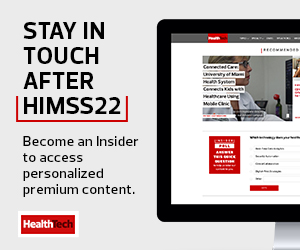1. Health IT Solutions Need to Center People
Dr. Steven Lane, clinical informatics director for privacy, information security and interoperability at Northern California-based Sutter Health, shared his own experience with interoperability failure. He was scheduled to perform a surgery in a hospital that was not in his home system, but during pre-op, the nurse could not access his records from the home hospital, even though the systems were supposed to be connected.
This underscores one reason that clinicians need to be actively involved in the creation of interoperability solutions that are supposed to improve their workflows, Tiase said.
“We need to ensure that our patients and clinicians are involved as these products are being designed and developed. And that’s really not happening right now,” she added. “It’s being presented to them once it’s solved, so I think really shifting that paradigm a bit is going to be very important, especially that patient piece. Because as our patients become more educated around data sharing possibilities, I think they’re going to be great influencers in making sure we get this right and figure out some of those barriers and struggles.”














